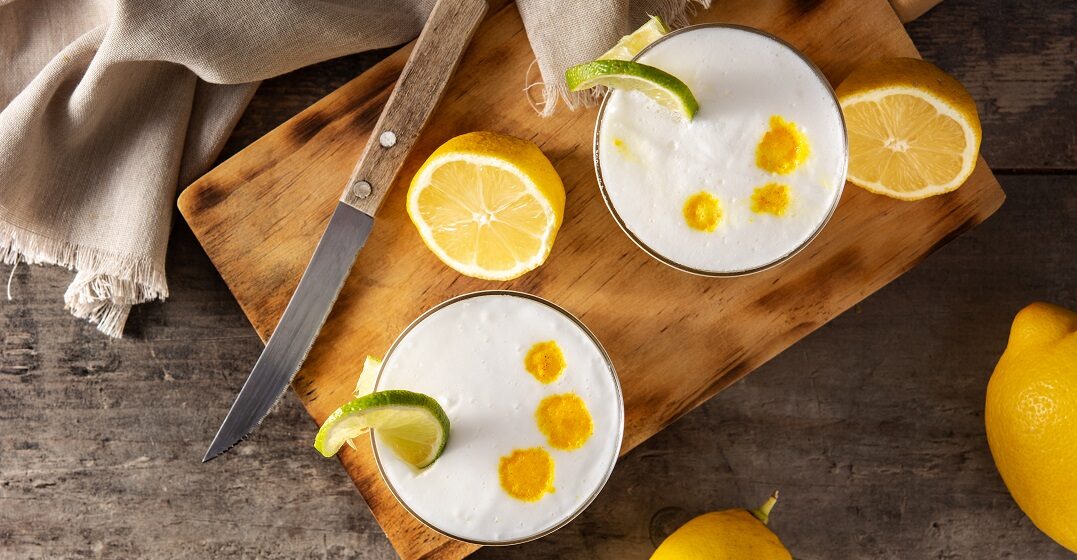Chilean Pisco: Origins, types and drinks
Published on October 22, 2020 / Updated on June 19, 2023
When you learn Spanish at home or take online Spanish lessons, it’s important to learn about the culture that goes along with the language. The ultimate goal of every language learner is to visit the country and talk easily with native speakers, right? Culture will help you connect with your new friends. We’ve talked before about life in Chile, the cool street art scene and the unique version of Chilean Spanish that is spoken there. Today we are going into party mode. And we are exploring how to drink Pisco, the alcohol of choice in Chile.
Pisco is a type of high-proof grape-based spirit similar to brandy. At the CAPEL pisco cooperative or pisquería in the central Chilean town of Vicuña, tour guides explain that pisco began as a drink of the people. In the 16th century, indigenous grape harvest workers would take discard from the Spanish wine-makers and do a second pressing of the leftover skins. From there, they would distill their product and enjoy it in the work camps in the vineyards. Pisco was popular and accessible for those who couldn’t afford to drink expensive wine.
Today, the Chilean government regulates two zones in northern Chile and 13 grape varietals (mostly Moscatel rosada, de Alejandría and Pedro Jiménez) for Pisco production. A similar product made outside these regulations is designated as aguardiente.
If you go to Peru or Chile to study abroad and learn Spanish, this question will definitely come up. Is Pisco from Peru or Chile? This origin debate involves patriotism, geopolitics and cultural traditions. As you can imagine, the discussion between neighbors with a history of border conflicts can get tense.
South American history identifies a Peruvian port town named Pisco, which was famous for aguardiente distribution dating back to 1572. It is likely that the spirit originated in Peru and grew quickly in popularity across the region. Today Pisco is made in both Peru and Chile, both countries claim it as the national drink and both countries have their own unique process and regulations.
Chilean Pisco is broken down into four types that increase in color, age and alcohol content.
Chilean Piscos are aged in large, copper basins where they increase in strength.
Just as with other hard liquors, mixed drinks are typically made with the cheapest (i.e. youngest) version of Pisco you have on hand. Aged Pisco is saved for sipping. Here are some drinks you can get in most bars in Chile’s capital city of Santiago.
Piscola – The simplest and most universal of cocktails, this is pisco mixed with Coca-Cola. You will see this drink option at Chilean house parties or carretes.
Chilcano – A basic chilcano is Pisco, fresh lemon juice and ginger ale. The result is a balanced sweet-and-sour flavor that packs a punch.
Piston – A straightforward, mature cocktail, the piston is Pisco and tonic garnished with a lemon slice. This drink is refreshing and clean, perfect for summertime barbecues. Try it at Chipe Libre in the hip Bellas Artes neighborhood.
Pisco Sour – Perhaps the most famous Pisco drink around the world, this cocktail is where Peru and Chile diverge. A Peruvian Pisco Sour is lime juice, simple syrup and egg white. Ingredients are shaken until smooth and frothy and served in a tumbler glass with a dash of Angostura bitters. The Chilean Pisco Sour omits the egg white and bitters, uses lemon juice or a lemon-lime mixture and is served in a champagne flute for a drink with a tart, fresh taste. Try a great one at Hotel Foresta bar near Cerro Santa Lucia.
Cola de Mono – Literally translated as “monkey’s tail” this is a drink served in Chilean homes around the holidays. Pilar’s Chilean Food & Garden describes it as coffee eggnog made with Pisco, which is spot on.
Chilean Pisco is more than just a drink – it’s a reflection of Chile’s rich agricultural history and the warm hospitality of its people. Whether you prefer a traditional Pisco Sour or a more adventurous cocktail, every sip tells a story of the country’s unique culture and traditions. If you haven’t had the chance to try Chilean Pisco before, we highly recommend it. With its smooth taste and complex flavors, it’s sure to become a new favorite. So, which drink sounds the most delicious to you? Give Chilean Pisco a try and discover the taste of Chile for yourself.
